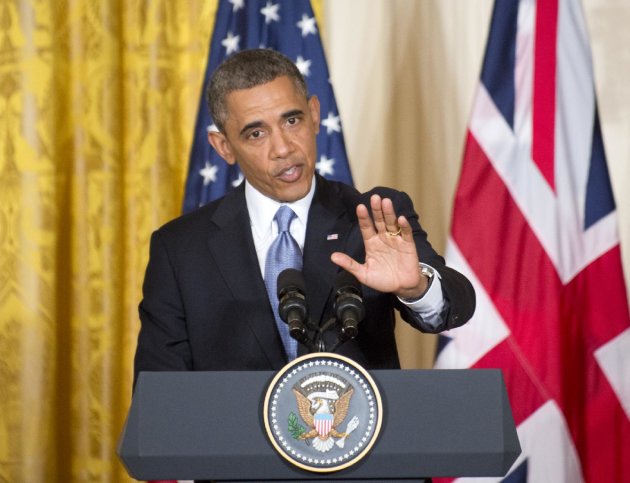MANCHESTER, England (AP) ? Manchester United will attempt to make a smooth transition when Alex Ferguson leaves the dugout for the last time this month, with David Moyes expected to take over the managerial reins.
The Everton manager has never won a major trophy in his coaching career, but has long been championed by his fellow Scotsman at United.
And Moyes quickly emerged as the front-runner to assume one of the soccer's most coveted jobs within hours of the 71-year-old Ferguson announcing his retirement on Wednesday after nearly 27 trophy-filled years in charge at Old Trafford.
Moyes held talks late Wednesday about his future with Everton chairman Bill Kenwright, who did nothing to quash the expectation that his manager with be defecting across the northwest.
"David's contract is up in six weeks' time and he has the right to make his own decisions," Kenwright told Sky Sports television. "He has served this club wonderfully well."
The 50-year-old Moyes has shown loyalty and staying power in his 11 years with Everton ? attributes that should go down well at United, which is trying to maintain stability at the club and avoid any radical changes to the structure after Ferguson steps up to the boardroom when the season ends.
United chief executive David Gill has stressed the need to maintain the promotion of young talent without Ferguson's successor making wholesale changes to a squad that has just produced the club's 20th English title.
"In our two most successful eras ? with Sir Matt Busby (1945-1969) and then Sir Alex ? we had managers there who sort of got involved with the whole aspects of the club, whether it be from the youth team aspects, obviously up to the first team, all the aspects of it," Gill said.
"And that degree of loyalty ... is crucial to the success of Manchester United."
Ferguson has appeared to anoint Moyes, a three-time manager of the year, as his successor, impressed by Moyes' grittiness and determination.
Moyes made the transition into management at Preston North End in 1998 and gained promotion to the League Championship two years later.
The former Celtic player moved to Everton in 2002 and turned the Merseyside club from a relegation contender into a regular qualifier for Europe. In 2005, he even guided the club into the qualifying rounds of the Champions League.
Ferociously ambitious with a keen eye for emerging talent like Ferguson, Moyes has maintained Everton as a force near the top of the Premier League despite struggling with a lack of cash to invest in players.
That's why, according to Ferguson, Moyes should not be judged on his inability to turn Everton into a force in England or Europe.
"David has had to contend with not having a strong financial structure," Ferguson said last year. "He has to get the best out of the players he has had available."
Ferguson has provided a source of inspiration to Moyes as he has held out for a job where the resources match his ambitions.
"I look upon Sir Alex, I suppose, as a role model, but mainly I look at him and wonder, 'How can you have stayed in this job so long?'" Moyes has said.
The simple task for Ferguson's successor, according to former United captain Gary Neville, is to "play attractive football, bring young players through and win a championship."
As such, Neville believes the potential hiring of Moyes as United's 20th manager "makes sense."
"They want someone to respect the history and tradition of the club, someone who is there for the long term," Neville said. "The club does not go for quick-fixes."
But Wall Street investors could be spooked by the appointment of Moyes, whose modest achievements contrast with those of Real Madrid manager Jose Mourinho, who was linked with the United job but has long been a lightning rod for controversy.
News of Ferguson's retirement alone was greeted by United shares dropping more than 5 percent in early trading on the New York Stock Exchange, but the losses were clawed back quickly. The shares closed at $18.44, down 1.8 percent.
Before United was listed on the NYSE last year, the club warned that Ferguson's successor "may not be as successful as our current manager" and could "adversely affect our ability to attract and retain coaches and players."
It won't take long for United to discover if that is the case.
Even before Ferguson announced his retirement plans, striker Wayne Rooney told the manager in recent weeks that he wanted to seek a fresh challenge away from the club, a person familiar with the situation said. The person spoke on condition of anonymity to confirm British media reports because he was not authorized to discuss the talks publicly.
If the 27-year-old Rooney was to stay at United he is likely to be reunited with Moyes for the first time since his acrimonious departure from Everton in 2004.
Rooney's United future has been clouded in uncertainty since Robin van Persie was signed from Arsenal last year, and he was left out of the starting lineup for the second leg of the Champions League loss to Real Madrid in March.
But with two years remaining on the player's contract, United issued a statement late Wednesday to stress: "Rooney is not for sale."
The truth of that statement should begin to become apparent when United begins life without Ferguson with a preseason tour of Asia and Australia in July.
Source: http://news.yahoo.com/moyes-front-runner-over-man-united-073010365.html
Mama Movie flyers epo suits PlayStation Network chip kelly NRA




 Additional Info
Additional Info


